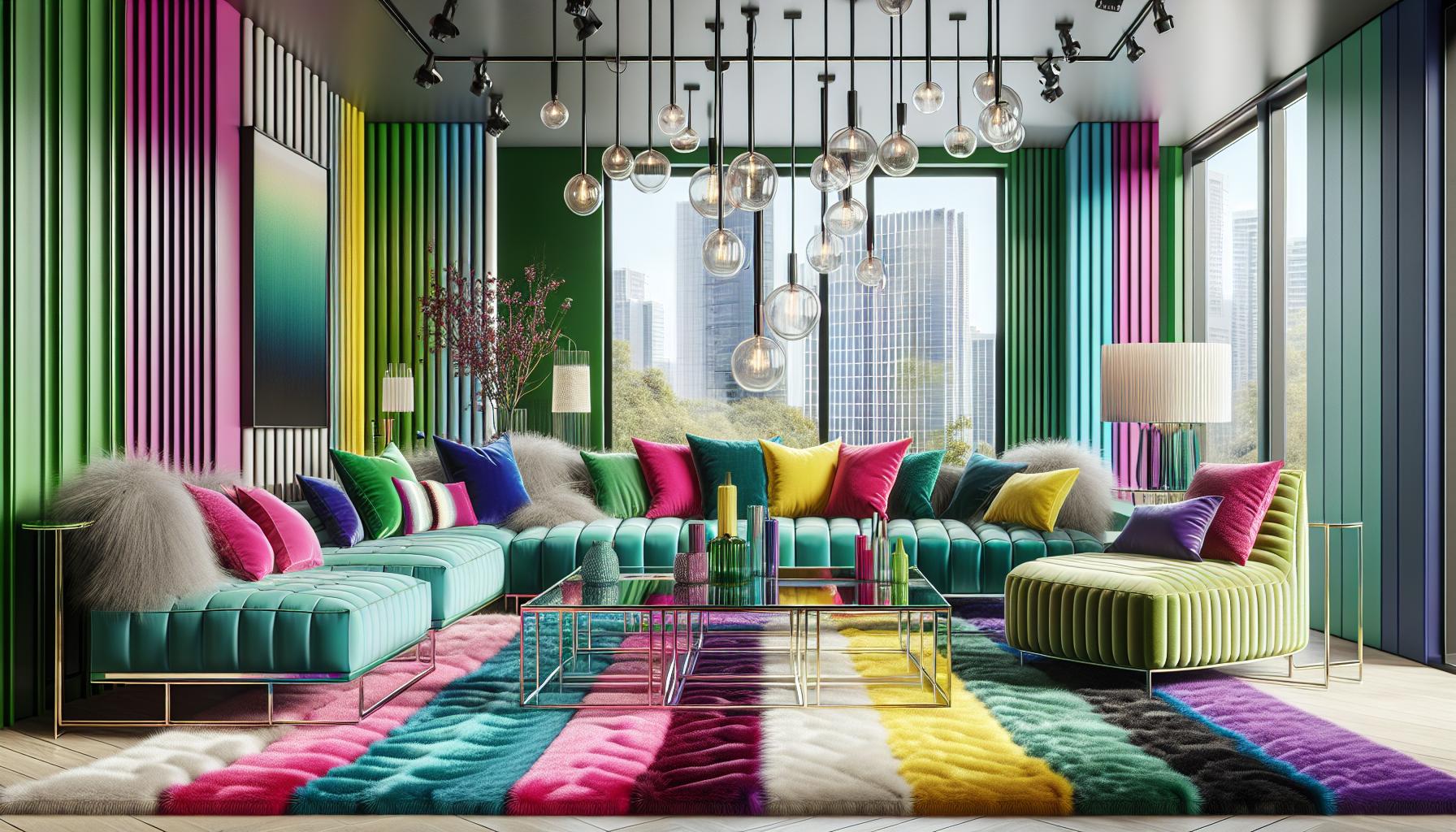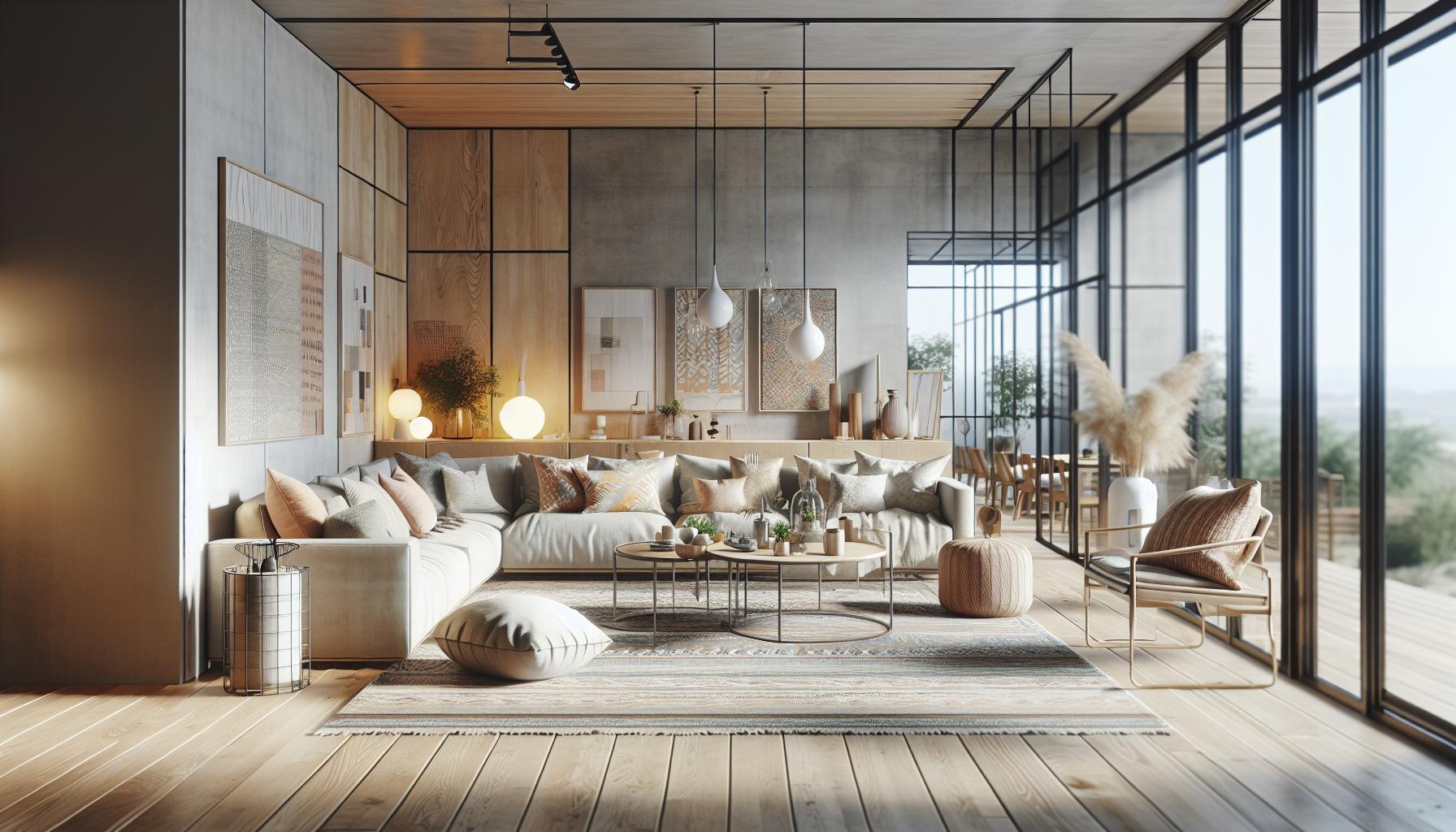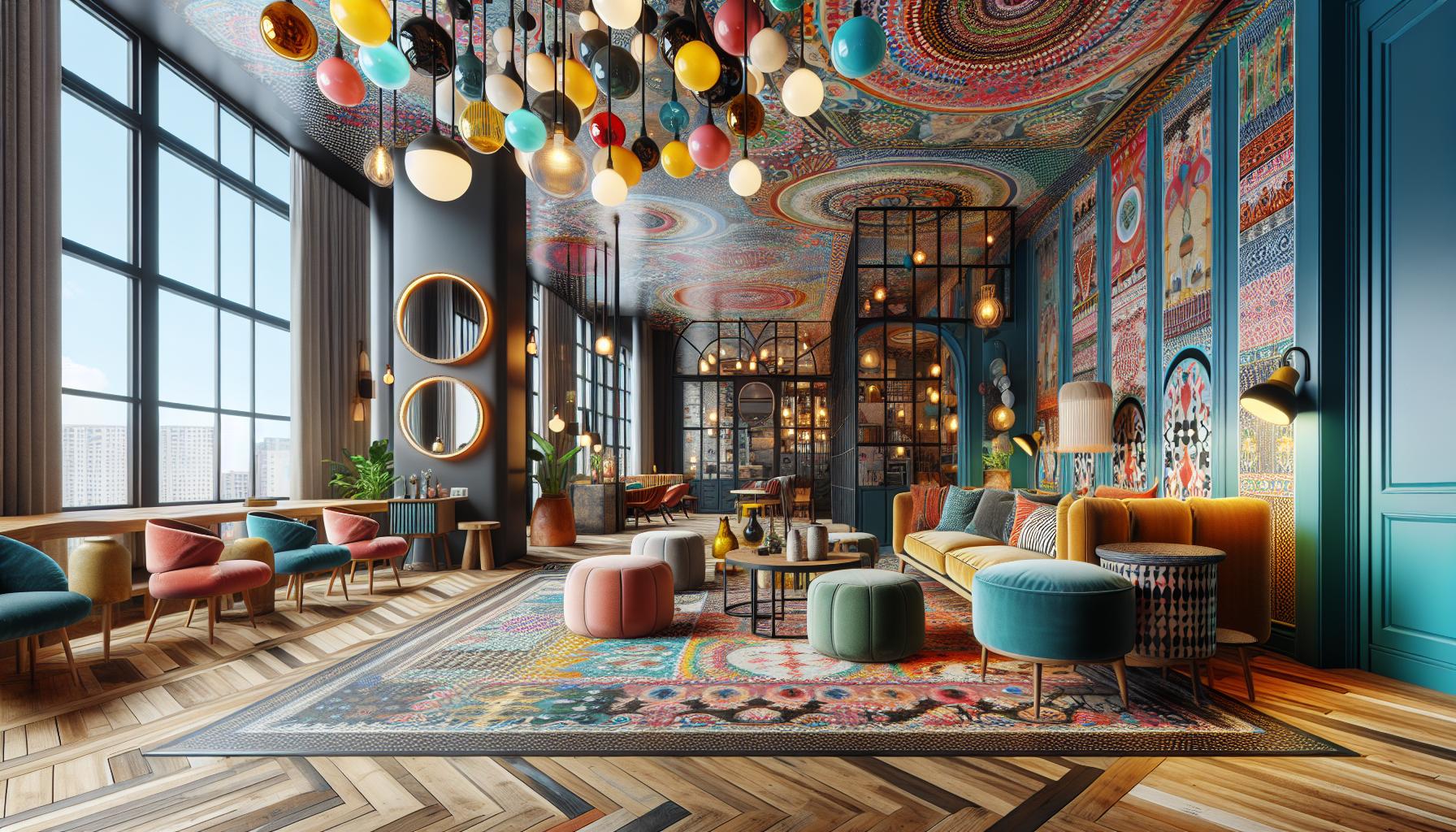The 2000s marked a vibrant era in interior design, blending eclectic styles with emerging technology. As the millennium turned, homeowners began to embrace bold colors, unique textures, and innovative materials, reflecting a desire for individuality in their spaces. This decade saw the rise of minimalism alongside maximalism, creating a dynamic interplay that defined many interiors.
From sleek modern furniture to retro-inspired accents, the 2000s offered a fresh take on traditional design principles. Trends like open floor plans and multifunctional spaces emerged, catering to the fast-paced lifestyle of the time. Dive into the fascinating world of 2000s interior design and explore how this decade shaped the way we live and decorate today.
Key Takeaways
- Eclectic Styles: The 2000s interior design emphasized a blend of styles, showcasing bold colors and unique textures that reflected homeowners’ individuality.
- Trendy Color Palettes: Vibrant hues like lime green, electric blue, and hot pink dominated, often paired with neutral tones to create energetic and visually striking environments.
- Minimalism vs. Maximalism: This era witnessed a clash between minimalism, which focused on clean lines and simplicity, and maximalism, which embraced abundant patterns and colors, resulting in diverse interior aesthetics.
- Multifunctional Spaces: Open floor plans and multifunctional areas gained popularity, accommodating the fast-paced lifestyles of the 2000s while promoting connection and interaction among different living spaces.
- Technological Integration: Innovations such as LED lighting and smart home systems played a crucial role in transforming design, enhancing both functionality and aesthetic appeal.
- Influential Designers: Notable figures like Jonathan Adler and Kelly Wearstler emerged, pushing creative boundaries and establishing new standards in interior design through their vibrant and personalized styles.
2000s Interior Design
The 2000s featured a distinct blend of eclectic styles, characterized by the integration of bold colors and unique textures. Designers embraced innovative materials that fueled individuality in homes. Popular color schemes included vibrant hues like lime green, electric blue, and hot pink, often contrasted with neutral tones to create striking visual effects.
Minimalism and maximalism emerged as defining trends. Minimalism focused on simplicity, emphasizing clean lines and uncluttered spaces. It often employed neutral palettes and functional furniture. Maximalism, on the other hand, celebrated abundance and personal expression. It incorporated various patterns, textures, and colors, often resulting in visually rich environments.
Open floor plans gained traction, promoting connection and flexibility. Homeowners sought multifunctional spaces that adapted to their fast-paced lifestyles. Living areas merged with kitchens and dining spaces, enhancing social interaction.
Technology also influenced design choices, with advancements like LED lighting and smart home systems becoming mainstream. These elements not only added functionality but also modernized aesthetic appeal. Overall, the 2000s marked a significant period of transformation in interior design, emphasizing personal expression and versatility.
Key Characteristics

The 2000s interior design showcased a distinct blend of vibrant color schemes and innovative materials. Various aspects of this decade contributed to a unique aesthetic that prioritized personal expression and functionality.
Color Palettes
Color palettes in the 2000s featured bold and vibrant hues. Lime green, electric blue, and hot pink dominated many spaces, offering striking contrasts against neutral tones. These combinations created energetic environments that reflected individual preferences. Gradients and color blocking emerged as popular techniques, allowing homeowners to express creativity through varied color applications. The playful yet intentional use of color mirrored the eclectic nature of this period.
Materials And Textures
Materials and textures played a pivotal role in 2000s interior design. Homeowners embraced new synthetic and natural materials, such as glass, metal, and sustainable wood. These materials facilitated innovative applications, from sleek furniture pieces to breathtaking light fixtures. Textures ranged from soft textiles like velvet and chenille to smooth, reflective surfaces that added depth and interest. The mix of materials contributed to layered visuals, enhancing the overall design experience while promoting tactile engagement within spaces.
Influential Trends

The 2000s showcased several influential trends in interior design, reflecting the diverse preferences and lifestyles of that era. Key styles included minimalism, eclectic design, and the integration of technology.
Minimalism
Minimalism emphasized simplicity and functionality. Clean lines characterized furniture designs, while open spaces fostered a sense of tranquility. Color palettes often featured soft neutrals, allowing for a calm and cohesive atmosphere. Furniture pieces showcased a streamlined aesthetic, with an emphasis on storage solutions that decluttered living areas. Popular materials included natural wood and metal, reinforcing a modern yet warm environment. Designers often favored unobtrusive decor elements, creating a serene ambiance conducive to relaxation.
Eclectic Style
Eclectic style celebrated individuality and personal expression. Homeowners mixed patterns, colors, and textures from various design influences, resulting in unique and vibrant spaces. Key features included bold accent walls, layered textiles, and an array of decor items sourced from different eras. Pop art, vintage finds, and global artifacts frequently appeared together, creating visual interest and a sense of storytelling within the space. Eclectic interiors encouraged creativity and allowed for custom, tailored environments that represented the homeowner’s personality.
Technology Integration
Technology integration significantly transformed the 2000s interior design landscape. Smart home systems gained popularity, enabling efficient control of lighting, temperature, and security. LED lighting emerged as a favored choice, offering energy efficiency and versatility in design options. Home automation systems made spaces more functional while enhancing aesthetics through innovative lighting designs. Additionally, technology facilitated the creation of multifunctional spaces, accommodating the dynamic lifestyles of residents. As technology advanced, homeowners embraced its potential to enhance comfort and convenience while maintaining design integrity.
Notable Designers And Influences

The 2000s interior design scene featured a range of notable designers and landmark projects that defined the decade’s aesthetic. Emerging trends often reflected the broader cultural shifts of the time, emphasizing personal expression and innovative thinking.
Emerging Designers
Emerging designers in the 2000s brought fresh perspectives to interior design. Designers like Jonathan Adler and Kelly Wearstler became influential figures, known for their playful use of color and pattern. Their work embraced bold, eclectic styles, blending vintage elements with contemporary flair. Additionally, designers such as Martyn Lawrence Bullard and Philippe Starck gained recognition for their unique approaches, often fusing luxury with functionality. These designers pushed boundaries and encouraged a departure from conventional norms, setting new standards for creativity in interior spaces.
Iconic Projects
Iconic projects from the 2000s showcased the evolving landscape of interior design. The redesign of the Ace Hotel in New York City illustrated a chic blend of vintage and modern styles, attracting attention for its innovative use of space and striking decor. Another notable project, the Vitra Fire Station by Zaha Hadid, demonstrated deconstructivist architecture’s impact on interior environments, melding form and function in unprecedented ways. The renovation of the Salk Institute by Louis Kahn highlighted a seamless relationship between architecture and nature, offering inspiration for sustainable design practices. These projects not only exemplified the era’s trends but also influenced future directions within the industry.
Interior Design
The 2000s stand out as a transformative decade in interior design. This era embraced a unique blend of styles that encouraged personal expression and creativity. Homeowners found joy in mixing bold colors and textures, creating spaces that told their stories.
With the rise of technology and innovative materials, interiors became not only aesthetically pleasing but also functional. The focus on open layouts and multifunctional spaces catered to modern lifestyles, reflecting a shift toward connection and flexibility in design.
Designers of this period pushed boundaries, leaving a lasting impact that continues to influence contemporary interiors. The legacy of the 2000s is a testament to the power of individuality and the art of creating spaces that resonate with personal identity.